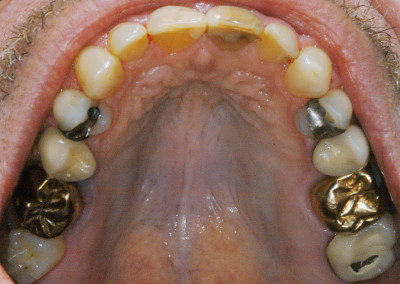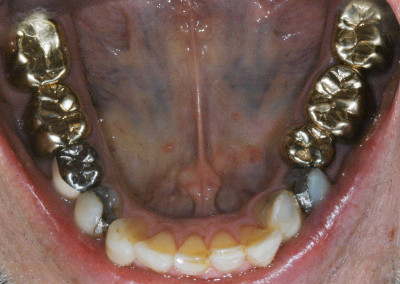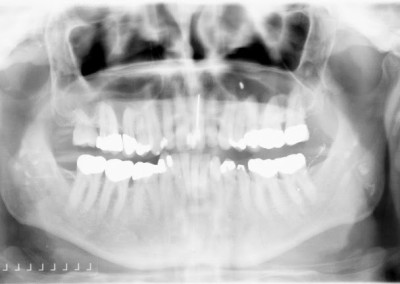The habitual pattern movie is tight and nicely balanced. Note how wide the arch form is programmed onto the white background. This is a large man with a wide arch. The shape of the arch helps us because the force is distributed over such a wide area. The 2-D scan is close to center, but the squeeze at the end of the force cycle is intense. The blue closure line shows when force is increasing in pressure. The 3-D movie tells us that the bite is holding and the dentistry remains as balanced as possible.
FUNCTION HEALTH
We have previously established Comfort, Function and Health of the periodontal tissue. The remaining amalgams will be removed and restored as needed and the patient is considering having #8 restored as well. Examine the shape of the palate, in the clinical photo #1 and then look at the pano. The skeletal asymmetry is in the left maxilla. The left nasal, left palate, and left articulating eminence are a different shape. The left condyle will want to jam back in time. The two step occlusion on the lower left teeth (#21 to #22) and the forward position of the right condyle all suggest that the skeletal asymmetry must be monitored. Checking the force patterns in recall visits will tell us if the envelope of function is over adapting.
FUTURE CONSIDERATIONS…
After all the teeth have been restored we will make a full upper splint to protect all the dentistry and not allow the condyles and dentition to change. A balanced full upper splint will prevent the condyles from pressing into the ears and help prevent any CEJ stress on the crown and restoration margins.



